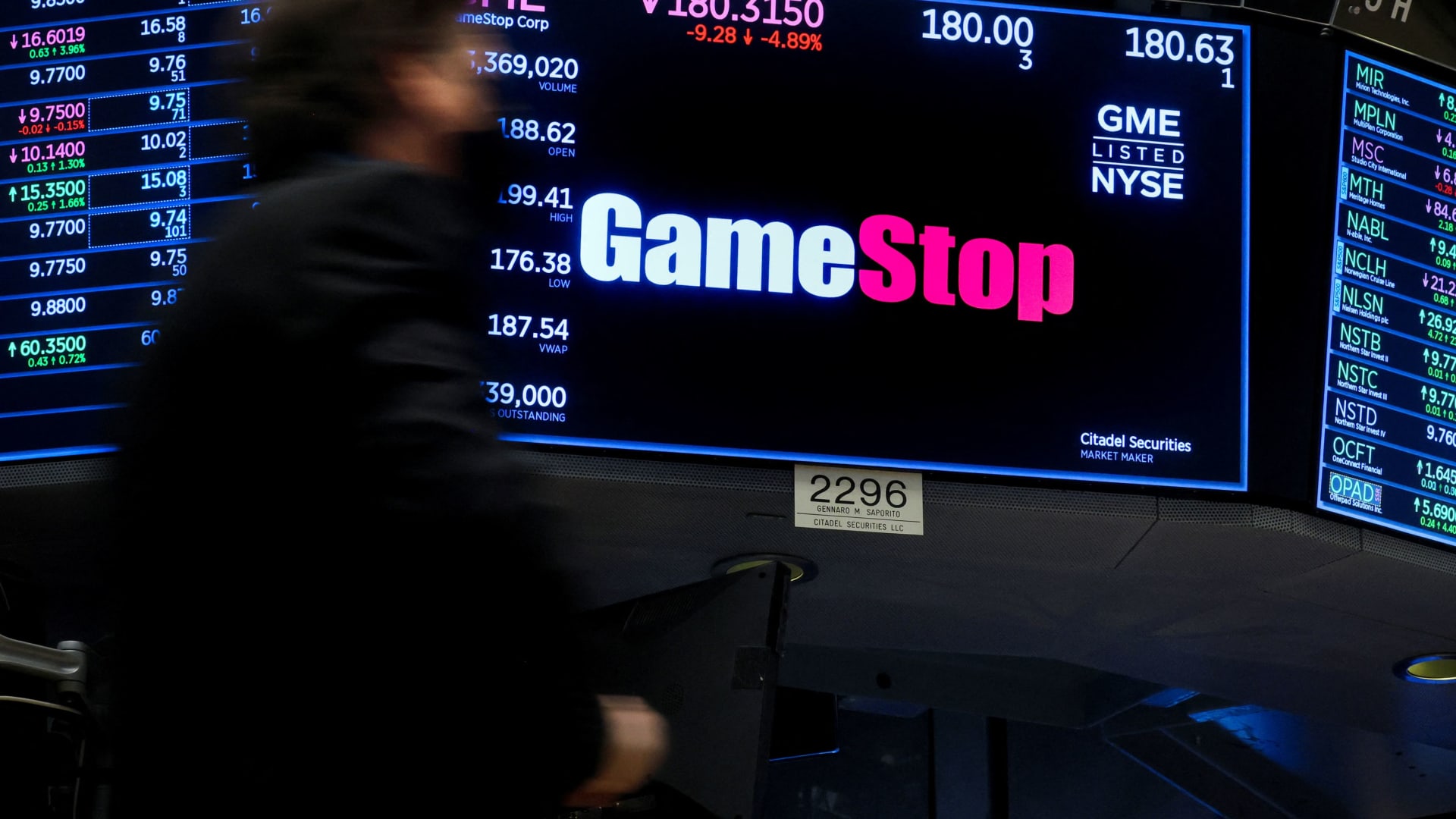GameStop said Wednesday its fiscal third quarter sales declined and its cash pile sharply dwindled, as the brick-and-mortar retailer has been working to expand its digital presence.
In the third fiscal quarter, which ended Oct. 29, GameStop’s total sales were roughly $1.2 billion, down from $1.3 billion in the same period last year. The company’s cash and cash equivalents fell to nearly $804 million from approximately $1.4 billion a year earlier.
related investing news
Shares of the company rose about 10% on Thursday, after declining 4.8% during Wednesday.
GameStop has been working to become profitable and revamp its brick-and-mortar retail business, after what executives have said were years of underinvestment. In recent months the retailer has changed up leadership and focus on initiatives to further entrench it in the digital world.
GameStop’s CEO Matthew Furlong said on a call with investors Wednesday the company “is attempting to accomplish something unprecedented in retail … seeking to transform a legacy business once on the brink of bankruptcy.”
The company reported a net loss of nearly $95 million, a slight improvement from about a loss of about $105 million in the same period last year.
Furlong added the company has been working to make its balance sheet stronger, and cushion its cash position, in hopes of putting it in a position to explore acquisitions of complimentary businesses. The CEO added the company would continue to cut costs, with layoffs occurring in the second half of 2022.
GameStop’s results cannot be compared with estimates because too few analysts cover the company. As in earlier past quarters since the beginning of the pandemic, GameStop didn’t provide a financial outlook.
The retailer continued to hold a lot of inventory on its balance sheet: $1.13 billion at the end of the quarter, although slightly down from $1.14 billion at the same time last year. Like other retailers, GameStop has been dealing with a backlog of inventory after intentionally bulking up on merchandise to contend with higher customer demand and supply chain issues.
GameStop strengthened its inventory position earlier this year by divesting a small portion of its merchandise in categories with soft demand, Furlong said Wednesday.
The company, which has become known as a meme stock, has been adjusting its business to a digital world. It tapped new leadership, including CEO Matt Furlong, an Amazon veteran, and Chewy founder and activist investor Ryan Cohen as board chair.
Still, the brick-and-mortar retailer has struggled to drive profits in recent years, leading to cost cuts and a shake-up in leadership. Earlier this year, it fired chief financial officer Mike Recupero and laid off employees.
The company also launched an NFT marketplace in July, which has been open to the public for beta testing. The marketplace allows users to connect their own digital asset wallets, including the recently launched GameStop Wallet, so they can buy, sell and trade NFTs for virtual goods.
GameStop said in a news release Wednesday its sales attributable to new and expanded brand relationships “were strong in the quarter, while sales in the collectibles category remained strong in a year-to-date basis.”
GameStop said last month that it had ended its partnership with FTX, after the crypto exchange filed for bankruptcy. Just months earlier, GameStop had announced the partnership with the aim of introducing its customers to the crypto world and marketplace, and had also started carrying FTX gift cards in some of its stores.
In a tweet, the company said it would be providing full refunds to impacted customers.
Furlong said Wednesday the company “was fortunate its exposure to digital assets has been very modest.” FTX’s bankruptcy filing has sent ripples through the crypto market. The CEO didn’t provide any updates regarding its recently ended partnership with FTX.


